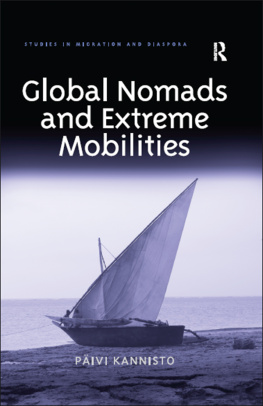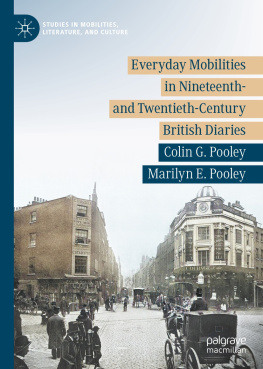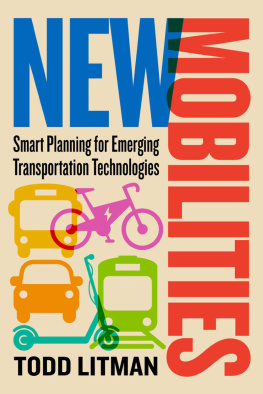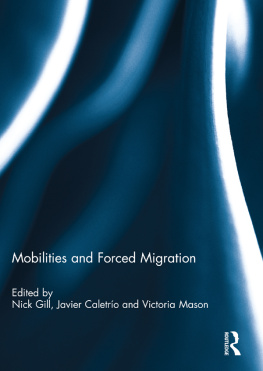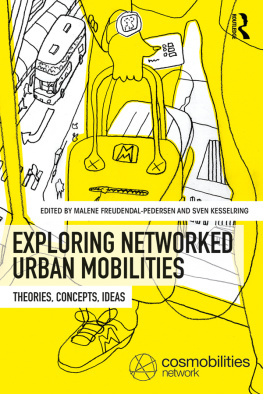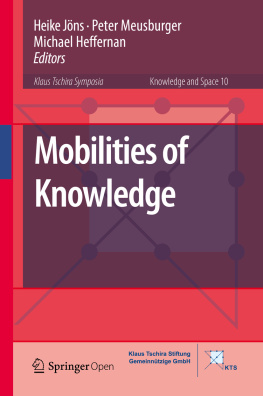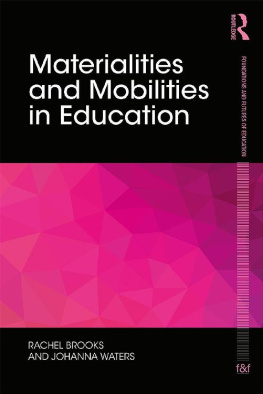First published 2016 by Ashgate Publishing
Published 2016 by Routledge
2 Park Square, Milton Park, Abingdon, Oxon OX14 4RN
711 Third Avenue, New York, NY 10017, USA
Routledge is an imprint of the Taylor & Francis Group, an informa business
Copyright Pivi Kannisto 2016
Pivi Kannisto has asserted her right under the Copyright, Designs and Patents Act, 1988, to be identified as the author of this work.
All rights reserved. No part of this book may be reprinted or reproduced or utilised in any form or by any electronic, mechanical, or other means, now known or hereafter invented, including photocopying and recording, or in any information storage or retrieval system, without permission in writing from the publishers.
Notice.
Product or corporate names may be trademarks or registered trademarks, and are used only for identification and explanation without intent to infringe.
British Library Cataloguing in Publication Data
A catalogue record for this book is available from the British Library.
The Library of Congress has cataloged the printed edition as follows:
Names: Kannisto, Pivi, author.
Title: Global nomads and extreme mobilities / by Pivi Kannisto.
Description: Surrey, UK, England; Burlington, VT: Ashgate, [2016] | Series: Studies in migration and diaspora | Includes bibliographical references and index.
Identifiers: LCCN 2015028320| ISBN 9781472454997 (hardback: alk. paper) | Subjects: LCSH: Nomads. | Stateless persons. | Statelessness.
Classification: LCC GN387.K36 2016 | DDC 305.9/069 18dc23 LC record available at http://lccn.loc.gov/2015028320
ISBN: 9781472454997 (hbk)
Contents
One morning in Kuala Lumpur, Malaysia, while my husband and I were having breakfast in a local restaurant, a Canadian man joined us at our table and told us his life story. He had been travelling for 28 years and made his living repairing Ferrari cars and doing other odd jobs a few weeks out of every year. At the time, he was working as a doorman in a local brothel with plans to leave for West Siberia to see a friend.
This chance meeting occurred just as we were at the beginning of pursuing a similar path. We had left our country of origin, Finland, in 2004 to go travelling. We knew nothing about the lifestyle we had chosen or of the existence of any other global nomads. We were intoxicated with the feeling that anything was possible and wholeheartedly enjoyed our newfound lifestyle, thinking that perhaps we were the only ones who had solved the riddle of finding freedom in the modern world.
Our brief encounter with the Canadian haunted me for half a decade: how had he come to choose his lifestyle and what made him keep going after 28 years? In 2010, I decided I would try to gather together the pieces of the puzzle. I began to search for other global nomads to participate in research on location-independence.
I soon discovered that there were no books about this lifestyle other than those that individual travellers had written about their own adventures. Existing academic literature, on the other hand, focussed on people who travelled for reasons other than lifestyle economic migrants who travel for work; lifestyle migrants for milder climates, cheaper prices, and better quality of life; refugees and exiles for political asylum; ethnic minorities such as the Roma people and Irish travellers to follow their century-old traditions; tourists for leisure.
Based on my own experiences, global nomads were on the move for the sake of travel rather than for wealth or a livelihood. These individuals were motivated by immaterial rewards such as interesting experiences, simpler lives, and a sense of excitement. They seemed to continuously be on the search for something new, not necessarily wanting to settle down anywhere. They were people of many places but of no one place in particular, to borrow the words of sociologist Zygmunt Bauman (2005, p. 67).
I started to call them global nomads, conscious of the controversial nature of the concept. Nomadism has been used in romanticising interpretations when highlighting freedom from places, norms, and values. These interpretations have raised criticism about the elite nature of wandering (e.g. Cresswell, 2006, p. 54; Sheller, 2011, p. 2). The most commonly known nomads are the pastoralists and warriors of third world nations, whose wandering is an ancient phenomenon having evolved during the Neolithic revolution when livestock economy began to develop and people settled down in villages. Ever since, nomads have intrigued the settled.
I suspected that the modern-day nomads would rather travel alone or in pairs than with livestock and family, and instead of in the wilderness, they would be found in urban areas where services such as accommodation, restaurants, supermarkets, and internet connectivity were available. Consequently, a seeming discrepancy between the old and new nomads became evident, which raised questions of inequality, life choices, and agency. At the same time, these seemed to be some of the crucial topics to be addressed. Nomadism for pastoralists was a part of tradition that was handed down from one generation to the next, but for global nomads it seemed to be a cherished choice, a statement which they used to detach themselves from some of the ideals in Western societies. Therefore, nomad with its ambiguous connotations evoked interesting questions for research: Why did global nomads decide to leave their former lives? Why do their lifestyles so captivate and disturb the settled? Where are their support groups and networks? Are they in or outside of societies?
I had a feeling that the wanderings of global nomads would provide us with a revealing mirror of the contemporary society and its contradictions. Through their frequent border crossings, global nomads make visible the power negotiations regarding mobilities movement of people, ideas, and things. Therefore, this book is not only about the curiosity of a couple of globetrotting wanderers but about more general trends in society. I hope that it opens up fresh horizons for understanding ourselves both in terms of what is going on in the world and how mobilities transform us.
Pivi Kannisto
I am proud to acknowledge the help, encouragement, and influence of Erik Cohen, Bertine Bargeman, Cassie deFilippo, Kevin Hannam, Molly Herrington, Petri Hottola, Mari Korpela, P.J. Martin, Hans Mommaas, Greg Richards, Ren van der Duim, T. Rowan, and Allan Williams in various phases of my work from PhD thesis to this book. My heartfelt thanks to all the global nomads who participated in the research, and my husband, Santeri.
The Shorter Oxford English Dictionary defines a nomad as a person who leads a roaming or wandering life. It categorises a migrant as a person who moves from one country or place to another to settle. In the context of this book it is settle which is the operative word. As the author of Global Nomads and Extreme Mobilities explains, for the protagonists in this volume it is the ability to travel when and where they wish, free from the restraints of a rooted and regimented existence that is dominated by the demands of money and conformity, that motivates their lifestyle one which some might consider consists of just drifting around the globe. Significantly, this twenty-first-century nomadism is not carried out in the traditional group or tribal manner. The global nomads that are the subjects of this book travel singly or, as in the case of the author, together with a partner.
The book is rich in primary source material and introduces the reader to an array of nomads of varying ages, both genders and from all parts of the globe. However, it is not without a theoretical base. Pivi Kannisto ensures that the volume is theoretically grounded and explores a range of theories that might accommodate this newly recognised form of migration. She places the lifestyle of global mobility up against that of the more traditional mobilities such as economic migration, (holiday) travel, family reunification, and escape from persecution, in order to measure where, and if, conventional theorising can accommodate her drifters, or alternatively, whether there is a need for a new approach to analysis and theory which relates more directly to global nomadism. Whilst so doing she asks her readers to confront the issues that face those seeking to individualise their lives in order to live away from the mainstream, and by so doing, in an unwritten subtext, questions whether this is really a viable choice for the long term.

